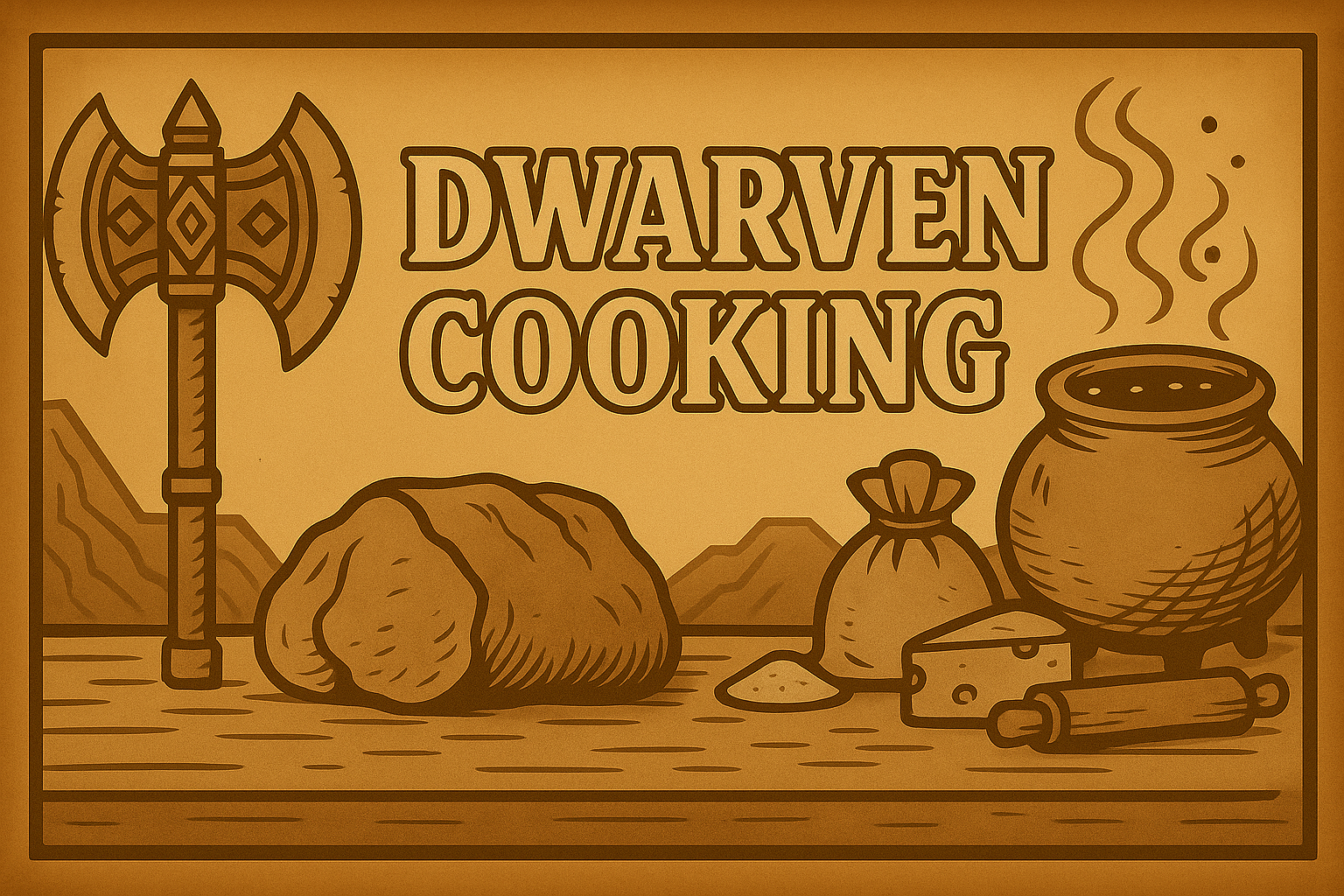Dwarven Beer
Dwarven Beer is more than a beverage — it’s a sacred tradition, a daily staple, and in some clans, a form of cultural currency. Brewed deep beneath the mountains in stone-lined vats, dwarven beer is known for its strength, richness, and impossibly long shelf life, with varieties ranging from mild table brews to concoctions so potent they’re used to clean forge equipment (and sometimes wounds).
Dwarven beer is brewed using tunnelgrains, fermented rootstocks, and wild yeasts cultured from the walls of ancient brewing caverns. Unlike surface brewers, dwarves often ferment in sealed stone or ceramic barrels, using subterranean mineral water, glowcap spores, and even ember-fused hops. The result is a variety of brews — each tailored to a clan’s terrain, history, and temperament.
Beer is used in rituals, meals, healing, and settling arguments, and most dwarven holds maintain at least one ancestral recipe passed down through generations, often locked in a vault more protected than the treasury.
“If it don’t foam like a cave-fall and hit like a pickaxe, it ain’t beer.”
Common Types of Dwarven Beer
Stonebrew
Classic everyday beer — earthy, strong, slightly cloudy.
- ABV: ~8–10%
- Taste: Malty, mineral-rich, faint ash finish
- Use: Table beer, forge-side sips, beard toasts
- Common in: Stonepan Hall, Deepmarch
Blackvein Stout
A heavy, ink-dark ale with hints of charcoal, salt, and dried rootfruit.
- ABV: 12–14%
- Taste: Roasty, bittersweet, almost chewable
- Use: Winter feasts, funerals, and deep-cave patrols
- Fun Fact: Leaves a dark ring around mugs — considered a sign of quality.
Emberbrew
A fiery red ale infused with emberpepper, fermented lava thistle honey, and smoked ashroot.
- ABV: 9–11%
- Taste: Spicy, warming, mildly sweet
- Use: Celebrations, duels, courting rituals
- Myth: Some say a well-made Emberbrew can reignite a dying hearth flame.
Glowcap Grog
A mild, glowing ale made from glowcap mushroom spores and fungal sugar.
- ABV: ~4–6%
- Taste: Lightly sweet, with a faint bioluminescent shimmer
- Use: Children’s diluted version for festivals; night-shift toasts
- Warning: Too many cause mild hallucinations or singing in ancient dialects.
Manufacturing process
Brewing Methods
- Fermentation Caves: Entire halls dedicated to fermenting and aging beer, with stone fonts carved with runes to “calm the yeast.”
- Runestone Filtering: Beer is poured over etched stone slabs to remove sediment and “settle angry spirits.”
- Coldcell Aging: High-proof brews are aged for years in glacial pockets or deep iron vaults.
Significance
Cultural Significance
- Ancestral Toasts: Dwarves never drink without raising a mug “to the bones beneath the stone and the flesh within the soil.”
- Oath-Beer: Binding contracts or marriage pacts are sealed with specially brewed beers.
- Funeral Rites: Mourners pour out “one for the deep” — a full mug over the stone before burial.
- Battle Brews: Some clans chug small flasks of Ironbrew (a near-liquid bread beer) before war, claiming it “anchors the blood.”
Legendary Brews
- Rammson’s Wrath: An illegal brew by Gord Rammson made with burnt barley, lava salt, and pure rage. Banned in three holds.
- Ancestor’s Reserve: A beer aged for 100+ years in the sarcophagus of the brewer who created it.
- Bloomshadow Ale: A controversial modern brew made with spore-fermented tunnelgrains; supposedly tastes like regret and honey.



Comments